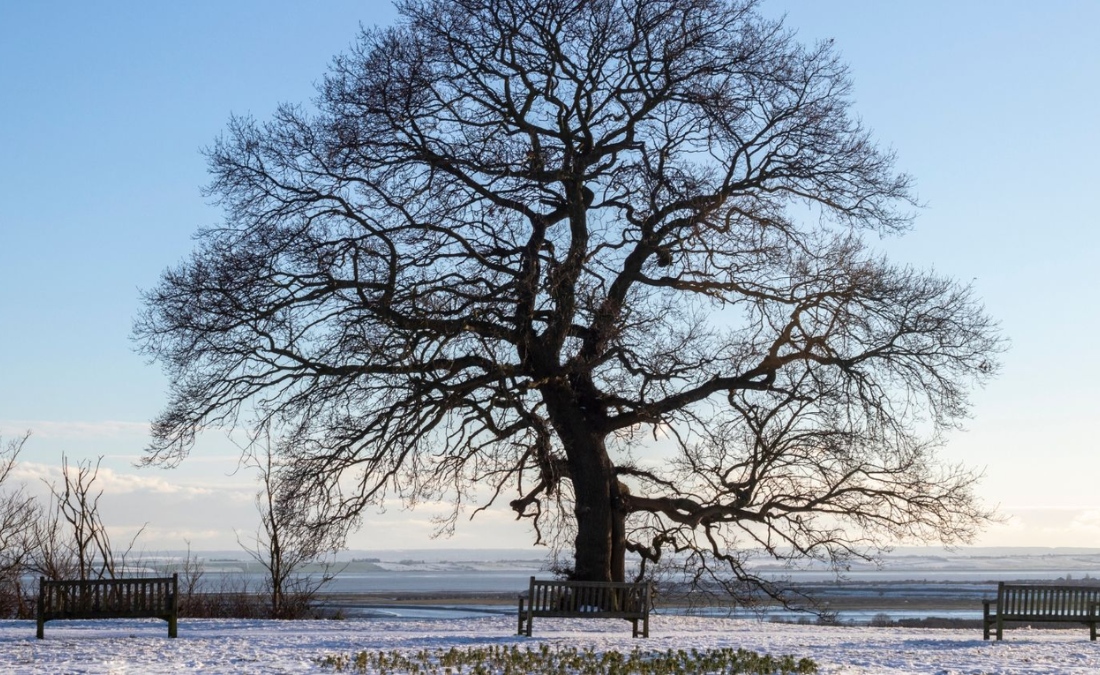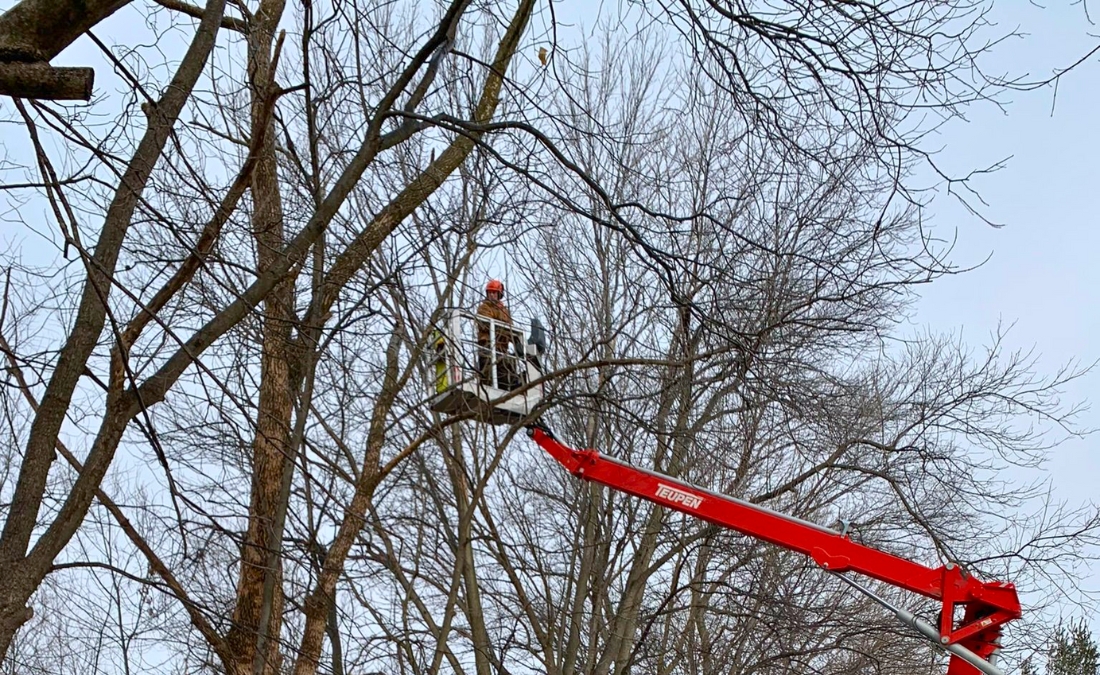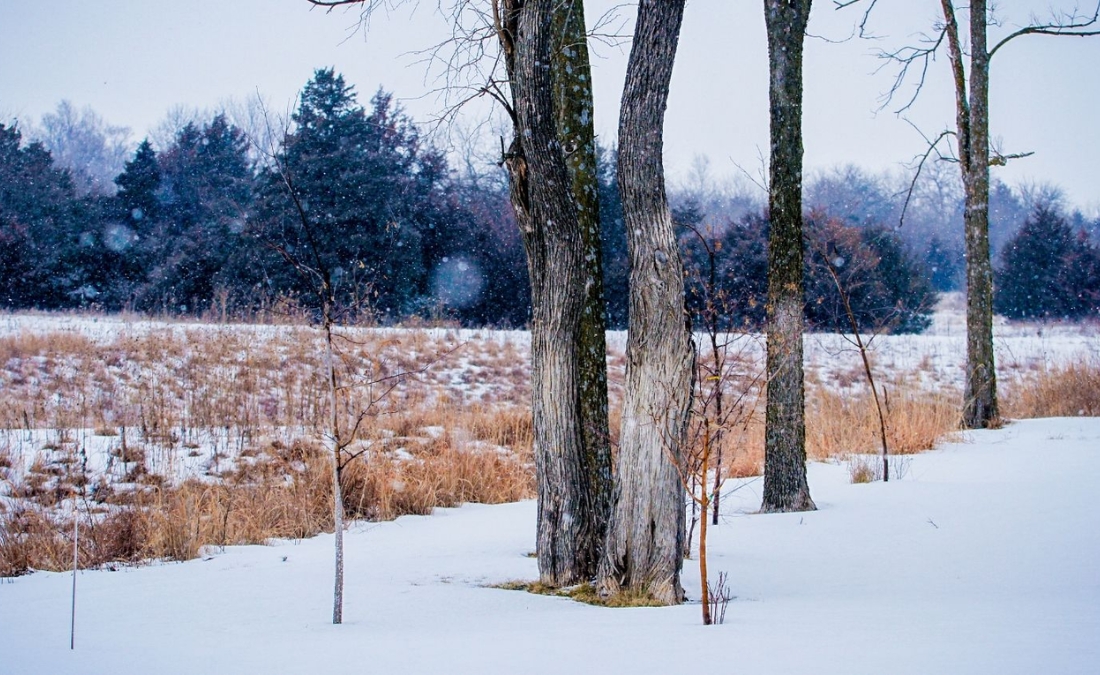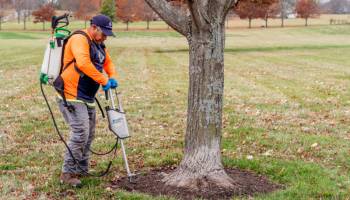7 Reasons Your Tree is Unsafe and What to Do About It
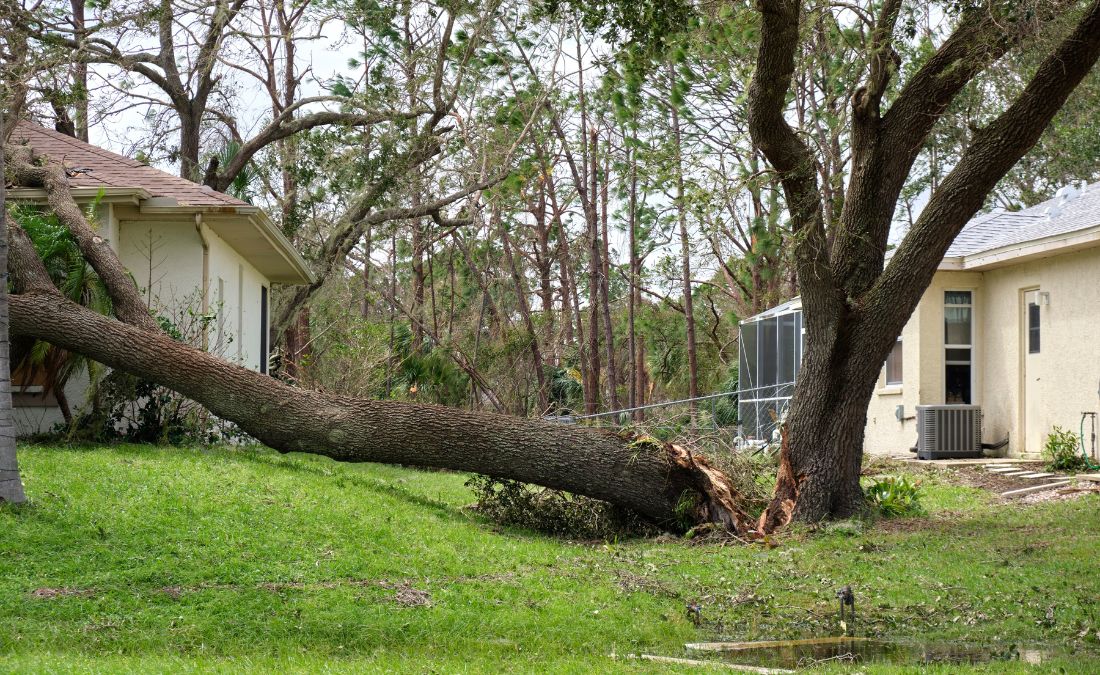
Dying trees can be dangerous for your property. Learn 7 warning signs your Des Moines tree is unsafe & how to handle removal before it becomes a hazard.
A recent tragedy not far from Des Moines is a sobering reminder of how dangerous trees can become. During a windy afternoon, an ash tree came crashing down, pinning a man beneath its weight in his own backyard. Despite efforts to save him, the outcome was devastating. The tree, likely weakened by damage or decay, became a hazard no one expected until it was too late.
Stories like this hit close to home and serve as a wake-up call. Even trees that look fine on the outside can have hidden problems that turn deadly in the right conditions. This tragedy reminds us that when a tree can’t be saved, ignoring the signs can lead to outcomes no one wants to face.
Key Takeaways:
- Root damage often goes unnoticed but can compromise your tree’s stability, especially in areas with heavy construction or soil erosion in Des Moines.
- Leaning trees or those with unstable growth should be inspected immediately, as they often signal root failure or soil instability.
- Dead or dying branches pose a significant safety risk and can indicate deeper health issues that may require tree removal.
- Trunk damage, including deep cracks, cavities, or signs of decay, can weaken a tree’s structure and make it prone to failure during storms.
- Storm damage to trees is common in Iowa, and severely damaged trees, especially those with split trunks or uprooted roots, often can’t be saved.
1. Visible Root Damage
The roots are your tree’s foundation, and just like a house, foundation problems spell trouble. In Des Moines neighborhoods like Ankeny and Johnston, where new construction is booming, root damage often occurs during building projects.
But construction isn’t the only culprit. Soil erosion, drainage issues, compaction from vehicles or heavy foot traffic, and even lawn care equipment can harm your tree’s root system.
Watch for:
- Exposed roots that appear damaged, decayed, or soft
- Roots that have been cut, torn, or scraped by equipment
- Large sections of exposed roots when there used to be soil
- Severed or damaged roots on one side of the tree
- Cracked or heaving soil over major roots
- Mushrooms or fungi growing around the root zone (which could indicate root decay)
When major roots are damaged, your tree loses both its anchor system and its ability to take up water and nutrients. Here in Des Moines, where summer storms can bring intense winds and heavy rain, compromised roots often lead to tree failure.
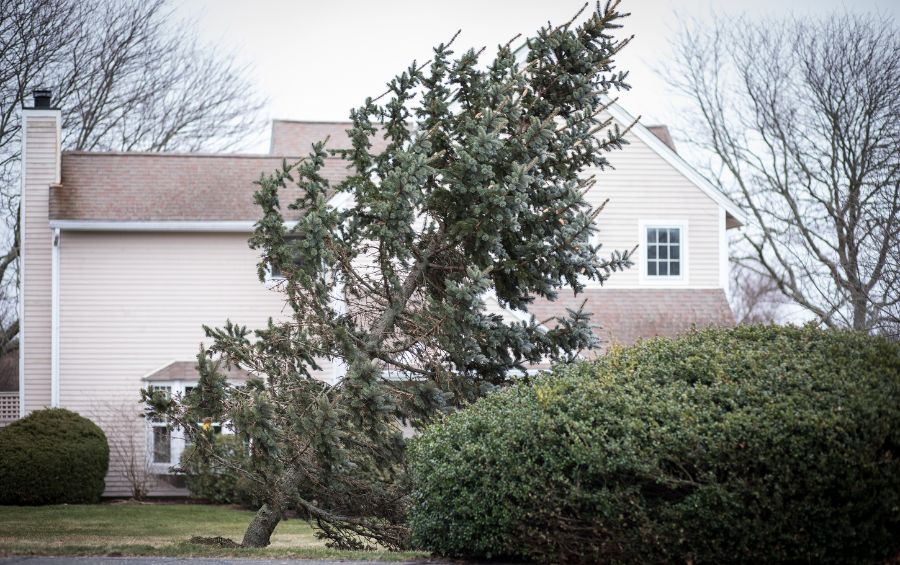
2. Leaning or Unstable Growth
A tree that’s suddenly starting to lean or has shifted position is a serious red flag that demands immediate attention. While some trees naturally grow at an angle, new or worsening leans usually indicate root failure, unstable soil conditions, or damage.
Look for:
- Fresh cracks in the soil around the root zone
- A lean of more than 15 degrees from vertical
- Recently exposed roots on the opposite side of the lean
- The tree beginning to lift soil or create a mound as it tips
- A lean that has noticeably worsened over time
Soil composition plays a major role in tree stability. Here in central Iowa, our heavy clay soils can become unstable during wet periods, leading to root failure and tree tipping. Don’t assume a leaning tree will stabilize on its own, especially if it’s near your home or driveway.
3. Dead or Dying Branches
Dead branches aren’t just ugly, they’re a safety hazard waiting to happen. In mature trees, especially silver maples and other fast-growing species common to Des Moines, large dead branches can weigh hundreds of pounds. These branches often snap during storms or even on calm days, threatening anything or anyone below.
Keep your eyes peeled for:
- Branches without any leaves during the growing season
- Bark falling off or missing from branches
- No signs of buds or new growth in spring
- Small twigs and branches regularly falling from the tree
- Branches that have already broken off, and are suspended by other branches
While a few small dead branches are normal, large dead limbs or sections of dying branches in the crown indicate bigger problems. This is especially true if the dead branches are all on one side of the tree or concentrated in one area. When more than 25% of a tree’s crown is dead, removal may be necessary to protect your property.
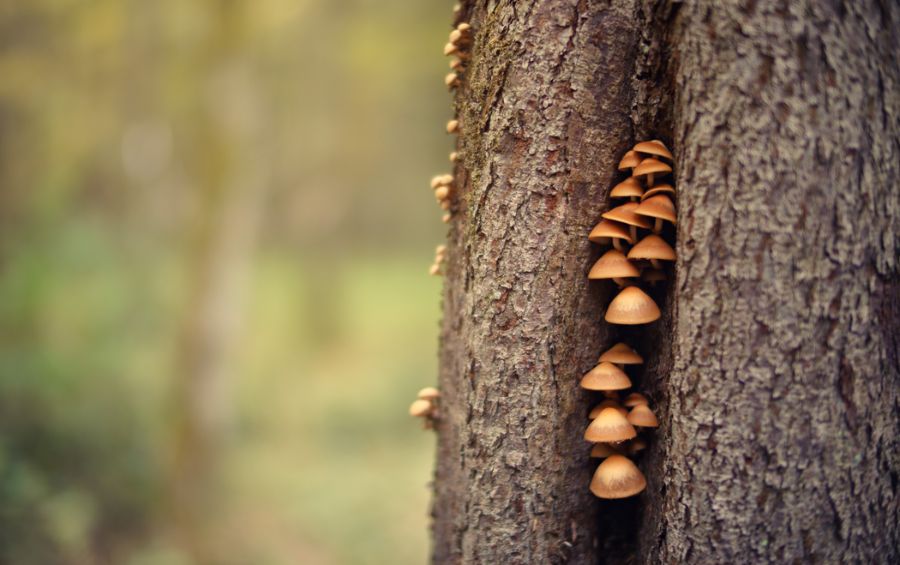
Fungal growth often points to tree decay.
4. Trunk Damage and Decay
A tree’s trunk is like its backbone, providing the strength and stability needed to stay upright. In Des Moines, where we see everything from ice storms to intense summer heat, trunk damage can quickly turn a sturdy tree into a major hazard.
Pay attention to:
- Large cavities or holes that extend into the wood
- Deep splits or cracks, especially those that extend upward from the base
- Multiple trunks separating from each other at the base
- Sections of missing or loose bark with soft wood underneath
- Fungal growth or mushrooms growing from the trunk
The presence of carpenter ants or other wood boring insects around these damaged areas is particularly concerning. These pests don’t attack healthy wood, so their activity usually indicates decay inside the trunk. And while not every trunk wound means your tree needs removal, significant decay in the main trunk often compromises the entire tree’s stability.
If you notice anything concerning, have your tree inspected by a local Certified Arborist.
5. Disease and Infestation
Tree diseases and pest problems are common in Des Moines, with certain issues like oak wilt and emerald ash borer being the main cause for concern.
A sick tree isn’t always a hazard, especially for our team at Arbor Masters that prefers to save trees rather than remove them. But some diseases can quickly turn a healthy tree into a dangerous situation by killing and weakening the tree rather quickly.
You might have a pest or disease problem if you see:
- Rapid leaf drop or browning outside of fall
- Sawdust like material around the base or in branch crotches
- Large areas of the canopy dying while other parts appear healthy
- Peeling bark with discolored wood underneath
- D shaped holes in the bark (particularly concerning for ash trees)
Early intervention can sometimes save a diseased tree, but waiting too long often leads to the point of no return. This is especially true with aggressive diseases like Dutch elm disease or when emerald ash borer infests an ash tree. Preemptive treatments, especially for ash trees, are much more effective than trying to treat a tree after it’s impacted.
If you have a tree suffering from EAB, oak wilt, or other major issues, removal is likely your only option.
6. Poor Growing Locations
Sometimes it’s not the tree itself that’s the problem, but where it’s growing. As Des Moines neighborhoods like West Des Moines and Clive continue to develop, trees that were once in open spaces now pose risks to new structures, utilities, or traffic patterns. Even healthy trees can become hazardous simply because of their location.
The most concerning locations include:
- Trees growing too close to power lines
- Roots lifting or cracking sidewalks and driveways
- Large branches hanging over your roof or living spaces
- Trees blocking important sightlines for traffic
- Multiple trees growing too close together, forcing unstable growth patterns
While a tree’s location alone doesn’t always demand removal, it becomes a serious concern when combined with other warning signs. For example, when a tree with large branches over your home sustains storm damage, or falls victim to pest problems, that tree could pose a risk and should be inspected by an arborist sooner rather than later.
7. Storm Damage
Iowa’s weather can be brutal on trees, from summer thunderstorms and derechos to winter ice and snow. While not all storm damaged trees need removal, certain types of damage can compromise a tree’s structural integrity beyond repair. The key is knowing the difference between minor damage that will heal and major damage that makes your tree a liability.
After storms, watch for:
- A split or broken main trunk
- Large limbs torn from the trunk, leaving significant wounds
- More than half the crown damaged or destroyed
- Tree leaning after the storm when it was straight before
- Exposed or damaged roots with soil upheaval
Don’t assume a storm damaged tree will heal on its own just because it survived the initial event. In fact, many trees that suffer major storm damage decline slowly over the following months or years. If your tree has experienced significant storm damage, especially to its main trunk or crown, having it professionally assessed can help you make an informed decision about its future.
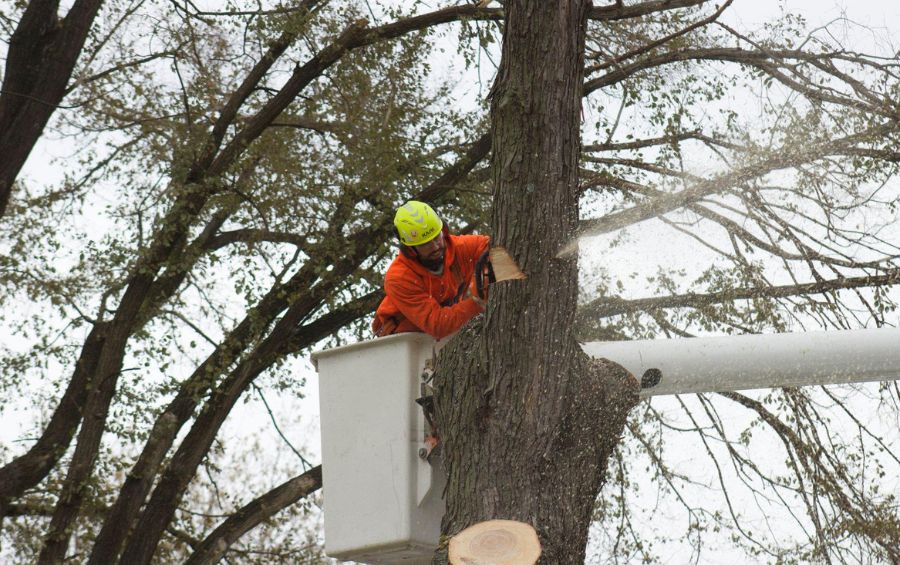
Don’t Wait to Have an Arborist Inspect Your Tree
When it comes to hazardous trees, waiting often turns a manageable situation into an emergency. While tree removal might seem expensive, it’s far less costly than repairing your home after a tree failure. Here in Des Moines, we’ve seen countless examples where delaying removal led to catastrophic consequences during storms or severe weather.
The financial impact of a fallen tree can be staggering. Beyond immediate property damage, you might face:
- Emergency removal fees
- Insurance deductibles and potential premium increases
- Repairs to damaged structures, vehicles, or landscaping
- Temporary housing costs if your home is damaged and deemed uninhabitable
- Potential liability if the tree damages neighboring property
- Risk of injury or death
Plus, proactively removing hazardous trees gives you time to plan, budget, and even consider replanting options. It’s much better to address tree problems during fair weather than to face an emergency situation during our next big storm.
FAQs About Tree Removal in Des Moines
Can I remove a tree myself?
Removing trees (even small ones) is extremely dangerous without proper equipment and training. Professional removal protects your safety and property, and ensures compliance with local regulations. Professionals also have insurance, should anything go wrong.
Can a severely damaged tree be saved instead of removed?
Sometimes! It depends on the extent and type of damage. Our Certified Arborists evaluate factors like structural integrity, overall health, and risk level to determine if preservation methods might be viable alternatives. Structural support, in the form of cabling and bracing, may be an option.
What’s the best season for tree removal in Des Moines?
While we remove trees year-round, winter removals are often ideal. Frozen ground provides better equipment access, dormant trees are lighter, and there’s minimal impact on landscaping. However, hazardous trees should be removed promptly regardless of season.
Could Your Tree Be Dangerous? Arbor Masters Provides Peace of Mind
If you’re concerned that one of your trees might be a hazard, you’re not alone. Arbor Masters is here to help with expert inspections, honest advice, and solutions that prioritize your safety and peace of mind.
Call us at 515-218-2025 or fill out our online form to request a free quote, and we’ll be happy to inspect your tree and determine if removal is necessary.
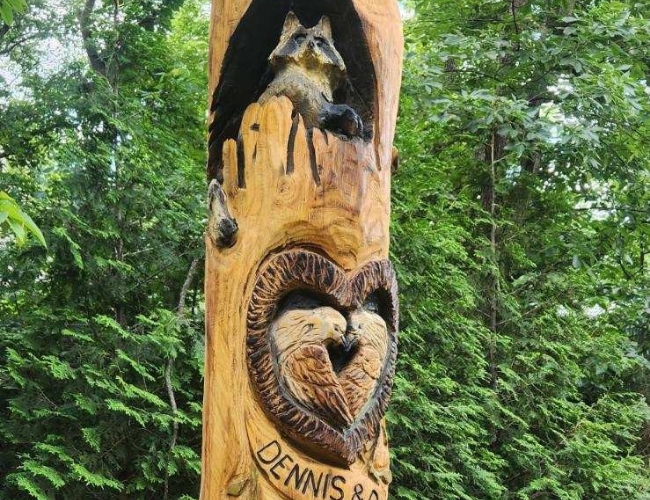
Get the latest local news, tree care tips, special offers, and company updates directly to your inbox! It's easy to subscribe and there's no spam - we promise.
"*" indicates required fields


